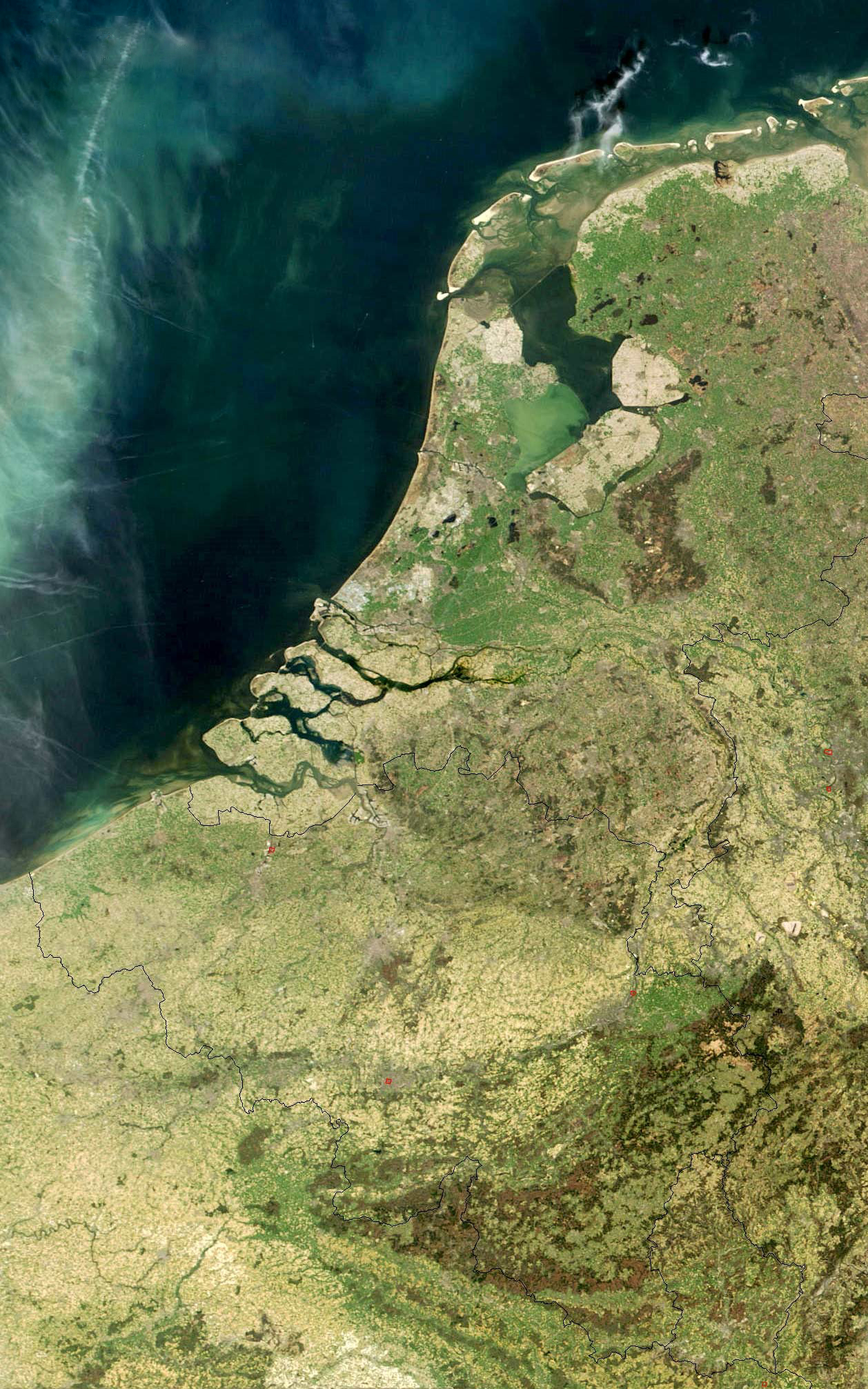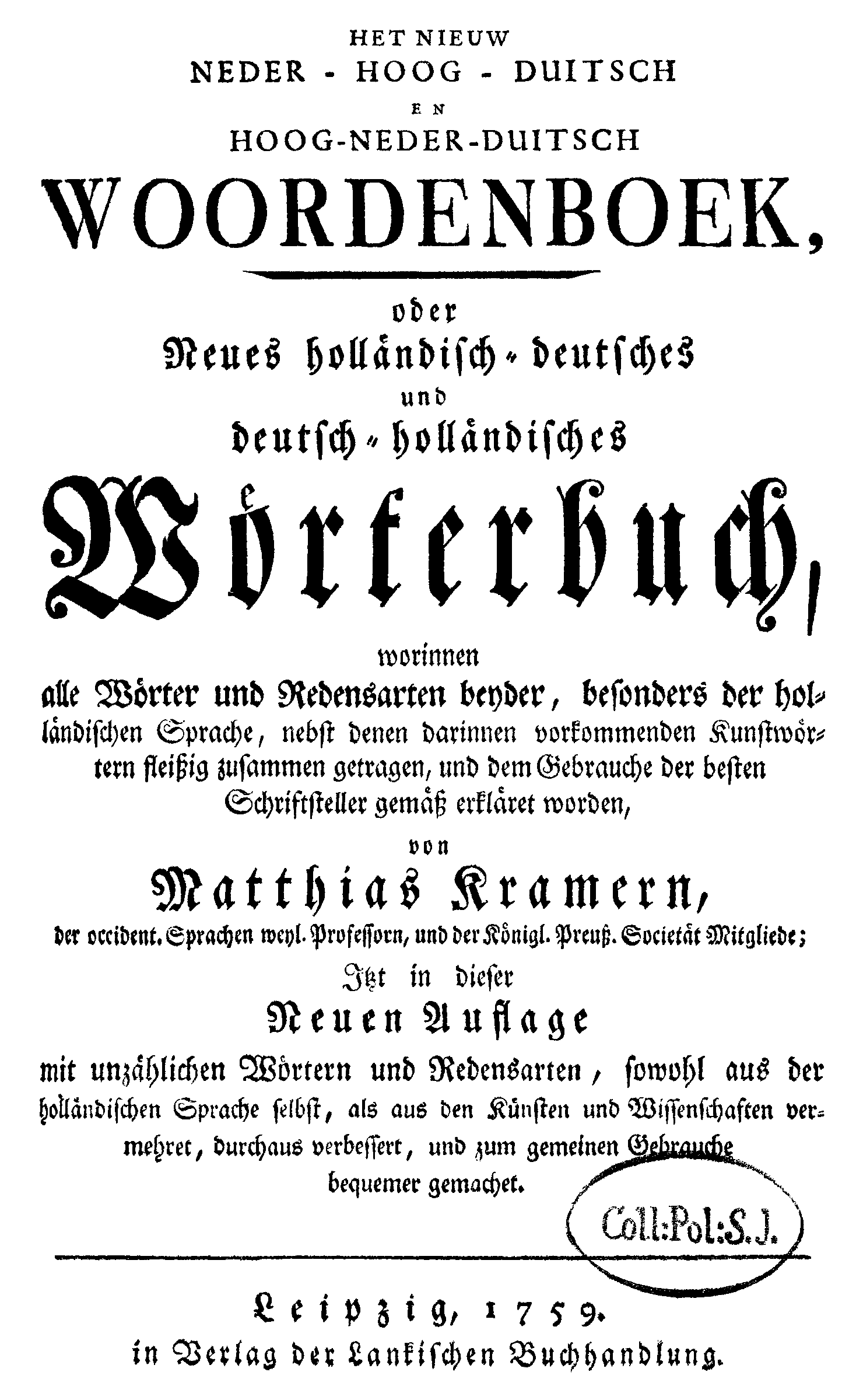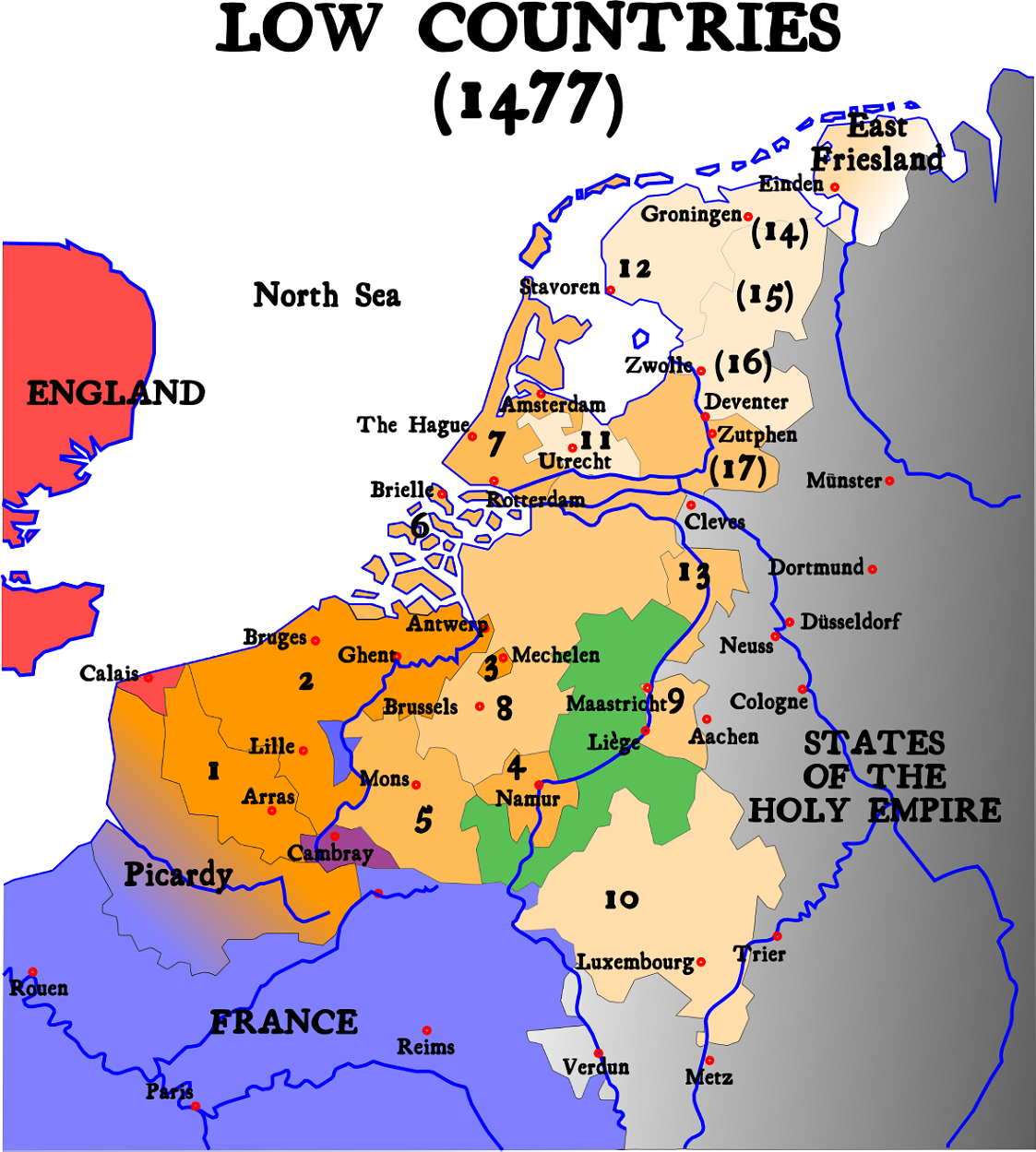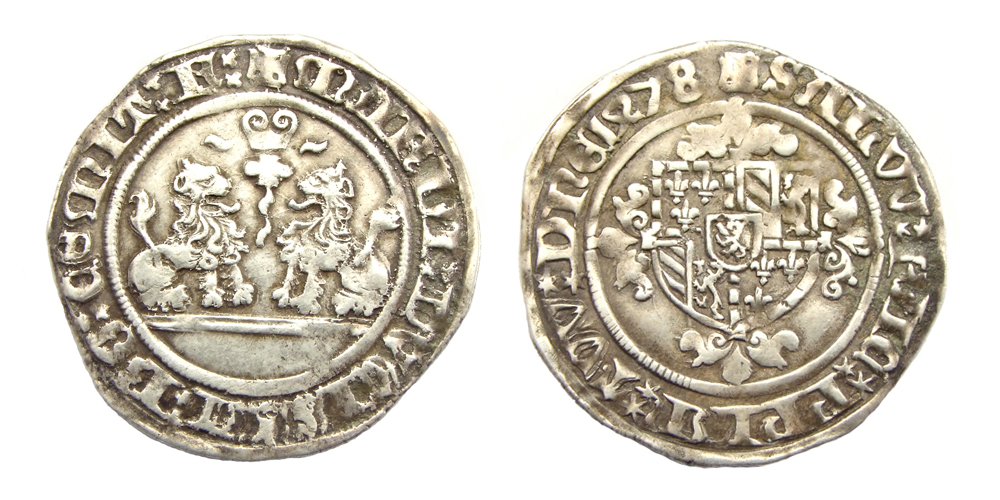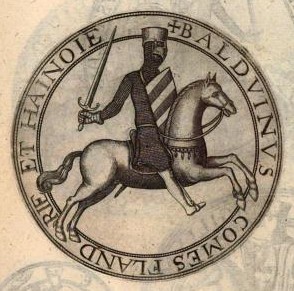|
Burgundian Netherlands
The Burgundian Netherlands were those parts of the Low Countries ruled by the Dukes of Burgundy during the Burgundian Age between 1384 and 1482. Within their Burgundian State, which itself belonged partly to the Holy Roman Empire and partly to the Kingdom of France, the dukes united these lowlands into a political union that went beyond a personal union as it gained central institutions for the first time (such as the States General). The period began with Duke Philip the Bold taking office as count of Flanders and Artois in 1384 and lasted until the death of Duchess Mary of Burgundy in 1482 after which the Burgundian State was dissolved, and the Low Countries came under the rule of the Habsburg monarchy by inheritance. In the 15th century, it was customary to refer to the Low Countries where the Duke of Burgundy ruled and usually resided as ''les pays de par-deçà'' meaning "the lands over here" as opposed to Burgundy proper (in Central France) which was designated ''les ... [...More Info...] [...Related Items...] OR: [Wikipedia] [Google] [Baidu] |
Late Middle Ages
The late Middle Ages or late medieval period was the Periodization, period of History of Europe, European history lasting from 1300 to 1500 AD. The late Middle Ages followed the High Middle Ages and preceded the onset of the early modern period (and in much of Europe, the Renaissance). Around 1350, centuries of prosperity and growth in Europe came to a halt. A series of famines and Plague (disease), plagues, including the Great Famine of 1315–1317 and the Black Death, reduced the population to around half of what it had been before the calamities. Along with depopulation came social unrest and endemic warfare. Kingdom of France, France and Kingdom of England, England experienced serious peasant uprisings, such as the Jacquerie and the Peasants' Revolt, as well as over a century of intermittent conflict, the Hundred Years' War. To add to the many problems of the period, the unity of the Catholic Church was temporarily shattered by the Western Schism. Collectively, those events ar ... [...More Info...] [...Related Items...] OR: [Wikipedia] [Google] [Baidu] |
Low Countries
The Low Countries (; ), historically also known as the Netherlands (), is a coastal lowland region in Northwestern Europe forming the lower Drainage basin, basin of the Rhine–Meuse–Scheldt delta and consisting today of the three modern "Benelux" countries: Belgium, Luxembourg, and the Netherlands (, which is singular). Geographically and historically, the area can also include parts of France (such as Nord (French department), Nord and Pas-de-Calais) and the Germany, German regions of East Frisia, Geldern, Guelders and Cleves. During the Middle Ages, the Low Countries were divided into numerous semi-independent principalities. Historically, the regions without access to the sea linked themselves politically and economically to those with access to form various unions of ports and hinterland, stretching inland as far as parts of the German Rhineland. Because of this, nowadays not only physically low-altitude areas, but also some hilly or elevated regions are considered part of ... [...More Info...] [...Related Items...] OR: [Wikipedia] [Google] [Baidu] |
House Of Valois
The Capetian House of Valois ( , also , ) was a cadet branch of the Capetian dynasty. They succeeded the House of Capet (or "Direct Capetians") to the List of French monarchs, French throne, and were the royal house of France from 1328 to 1589. Junior members of the family founded cadet branches in House of Valois#Dukes of Orléans, Orléans, House of Valois-Anjou, Anjou, House of Valois-Burgundy, Burgundy, and Counts and dukes of Alençon, Alençon. The Valois descended from Charles, Count of Valois (1270–1325), the second surviving son of King Philip III of France (reigned 1270–1285). Their title to the throne was based on a precedent in 1316 (later retroactively attributed to the Merovingian dynasty, Merovingian Salic law) which excluded females (Joan II of Navarre), as well as male descendants through the wikt:distaff side#English, distaff side (Edward III of England), from the succession to the French throne. After holding the throne for several centuries the Valois ma ... [...More Info...] [...Related Items...] OR: [Wikipedia] [Google] [Baidu] |
Duchy Of Burgundy
The Duchy of Burgundy (; ; ) was a medieval and early modern feudal polity in north-western regions of historical Burgundy. It was a duchy, ruled by dukes of Burgundy. The Duchy belonged to the Kingdom of France, and was initially bordering the Kingdom of Burgundy to the east and south, thus being distinct from the neighboring Free County of Burgundy (modern region of Franche-Comté). The first duke of Burgundy (), attested in sources by that title, was Richard the Justiciar in 918. In 1004, prince Henry of France, a son of king Robert II of France, inherited the Duchy, but later ceded it to his younger brother Robert in 1032. Robert became the ancestor of the ducal House of Burgundy, a cadet branch of the royal Capet dynasty, ruling over a territory that roughly conformed to the borders and territories of the modern region of Burgundy (Bourgogne). Upon the extinction of the Burgundian male line with the death of Duke Philip I in 1361, the duchy reverted to King John ... [...More Info...] [...Related Items...] OR: [Wikipedia] [Google] [Baidu] |
Terminology Of The Low Countries
The Low Countries comprise the coastal Rhine–Meuse–Scheldt delta region in Western Europe, whose definition usually includes the modern countries of Luxembourg, Belgium, the Netherlands and parts of Northern France. Both Belgium and the Netherlands derived their names from earlier names for the region, due to ''nether'' meaning "low" and ''Belgica'' being the Latinized name for all the Low Countries, a nomenclature that became obsolete after Belgium's secession in 1830. The Low Countries—and the Netherlands and Belgium—had in their history exceptionally many and widely varying names, resulting in equally varying names in different languages. There is diversity even within languages: the use of one word for the country and another for the adjective form is common. This holds for English, where ''Dutch'' is the adjective form for the country "the Netherlands". Moreover, many languages have the same word for both the country of the Netherlands and the region of the Low ... [...More Info...] [...Related Items...] OR: [Wikipedia] [Google] [Baidu] |
Burgundy
Burgundy ( ; ; Burgundian: ''Bregogne'') is a historical territory and former administrative region and province of east-central France. The province was once home to the Dukes of Burgundy from the early 11th until the late 15th century. The capital, Dijon, was wealthy and powerful, being a major European centre of art and science, and of Western Monasticism. In early Modern Europe, Burgundy was a focal point of courtly culture that set the fashion for European royal houses and their court. The Duchy of Burgundy was a key in the transformation of the Middle Ages towards early modern Europe. Upon the 9th-century partitions of the Kingdom of Burgundy, the lands and remnants partitioned to the Kingdom of France were reduced to a ducal rank by King Robert II of France in 1004. The House of Burgundy, a cadet branch of the House of Capet, ruled over a territory that roughly conformed to the borders and territories of the modern administrative region of Burgundy. Upon the exti ... [...More Info...] [...Related Items...] OR: [Wikipedia] [Google] [Baidu] |
Habsburg Netherlands
Habsburg Netherlands were the parts of the Low Countries that were ruled by sovereigns of the Holy Roman Empire's House of Habsburg. This rule began in 1482 and ended for the Northern Netherlands in 1581 and for the Southern Netherlands in 1797. The rule began with the death in 1482 of Mary of Burgundy of the House of Valois-Burgundy who was the ruler of the Low Countries and the wife of Holy Roman Emperor Maximilian I of Austria. Their grandson, Emperor Charles V, was born in the Habsburg Netherlands and made Brussels one of his capitals. Becoming known as the Seventeen Provinces in 1549, they were held by the Spanish branch of the Habsburgs from 1556, known as the Spanish Netherlands from that time on. In 1581, in the midst of the Dutch Revolt, the Seven United Provinces seceded from the rest of this territory to form the Dutch Republic. The remaining Spanish Southern Netherlands became the Austrian Netherlands in 1714, after Austrian acquisition under the Treaty of Rastatt. ... [...More Info...] [...Related Items...] OR: [Wikipedia] [Google] [Baidu] |
Mary Of Burgundy
Mary of Burgundy (; ; 13 February 1457 – 27 March 1482), nicknamed the Rich, was a member of the House of Valois-Burgundy who ruled the Burgundian lands, comprising the Duchy of Burgundy, Duchy and Free County of Burgundy, County of Burgundy and the Burgundian Netherlands, from 1477 to her death. As the only child of Charles the Bold, Duke of Burgundy, and his wife Isabella of Bourbon, Mary inherited the Burgundian lands at the age of 19 upon the death of her father in the Battle of Nancy on 5 January 1477. In order to counter the appetite of the French king Louis XI for her lands, she married Maximilian I, Holy Roman Emperor, Maximilian of Austria, with whom she had two children. The marriage kept large parts of the Burgundian lands from disintegration, but also changed the dynasty from Valois to Habsburg (the Duchy of Burgundy itself soon became a French possession). This was a turning point in European politics, leading to a French–Habsburg rivalry that would endure for c ... [...More Info...] [...Related Items...] OR: [Wikipedia] [Google] [Baidu] |
Count Of Artois
The count of Artois (, ) was the ruler over the County of Artois from the 9th century until the abolition of the countship by the French Revolution, French revolutionaries in 1790. House of Artois *Odalric () *Altmar () *Adelelm (?–932) *''Conquered by Arnulf I, Count of Flanders and directly under Flanders, 932–1180'' * Philip I, Count of Flanders (1168–1180), gave Artois as dowry to Isabelle of Hainaut, niece of Philip of Flanders, for her marriage to Philip II of France House of Capet *Isabelle of Hainaut, Isabella (1180–1190) *Louis VIII of France (1190–1223), her son Merged into royal domain. House of Artois, Capetian House of Artois *Robert I of Artois, Robert I (1237–1250), his second surviving son *Robert II of Artois, Robert II (1250–1302), his son *Mahaut of Artois, Matilda (1302–1329), his daughter, married to Otto IV, Count of Burgundy **contested by Robert III of Artois, Robert III (1302–1329) :en:Anscarids, House of Burgundy *Joan II, Cou ... [...More Info...] [...Related Items...] OR: [Wikipedia] [Google] [Baidu] |
Count Of Flanders
The count of Flanders was the ruler or sub-ruler of the county of Flanders, beginning in the 9th century. Later, the title would be held for a time, by the rulers of the Holy Roman Empire and Spain. During the French Revolution, in 1790, the county of Flanders was annexed to France and ceased to exist. In the 19th century, the title was appropriated by Belgium and granted twice to younger sons of Belgian kings. The most recent holder died in 1983. In 862 Baldwin I was appointed as the first Margrave of Flanders by Charles the Bald, King Charles II. It was a military appointment, responsible for repelling the Viking raids from the coast of Francia. The title of margrave (or marquis) evolved into that of count. Arnulf I, Count of Flanders, Arnulf I was the first to name himself as count, by the Grace of God. The title of margrave largely fell out of use by the 12th century. Since then, the rulers of Flanders have only been referred to as counts. The counts of Flanders enlarged t ... [...More Info...] [...Related Items...] OR: [Wikipedia] [Google] [Baidu] |
Philip The Bold
Philip II the Bold (; ; 17 January 1342 – 27 April 1404) was Duke of Burgundy and ''jure uxoris'' Count of Flanders, Artois and Burgundy. He was the fourth and youngest son of King John II of France and Bonne of Luxembourg. Philip was the founder of the Burgundian branch of the House of Valois. His vast collection of territories made him the undisputed premier peer of the Kingdom of France and made his successors formidable subjects, and later rivals, of the kings of France. Philip played an important role in the development of gunpowder artillery in European warfare, making extensive and successful use of it in his military campaigns. By political marriage, from 1384 Philip gained control over Flanders, one of the most wealthy provinces of Europe in that time. He and his successors ruled it until 1482. This period is referred to as the Burgundian Netherlands. Early life Philip was born in Pontoise in 1342 to John and Bonne of Luxembourg. His father, John, was the ... [...More Info...] [...Related Items...] OR: [Wikipedia] [Google] [Baidu] |
Personal Union
A personal union is a combination of two or more monarchical states that have the same monarch while their boundaries, laws, and interests remain distinct. A real union, by contrast, involves the constituent states being to some extent interlinked, such as by sharing some limited governmental institutions. Unlike a personal union, in a federation or a unitary state, a central (federal) government spanning all member states exists, with the degree of self-governance distinguishing the two. The ruler in a personal union does not need to be a hereditary monarch. The term was coined by German jurist Johann Stephan Pütter, introducing it into ''Elementa iuris publici germanici'' (Elements of German Public Law) of 1760. Personal unions can arise for several reasons, such as: * inheritance through a dynastic union, e.g. Louis X of France inherited France France, officially the French Republic, is a country located primarily in Western Europe. Overseas France, Its ov ... [...More Info...] [...Related Items...] OR: [Wikipedia] [Google] [Baidu] |


